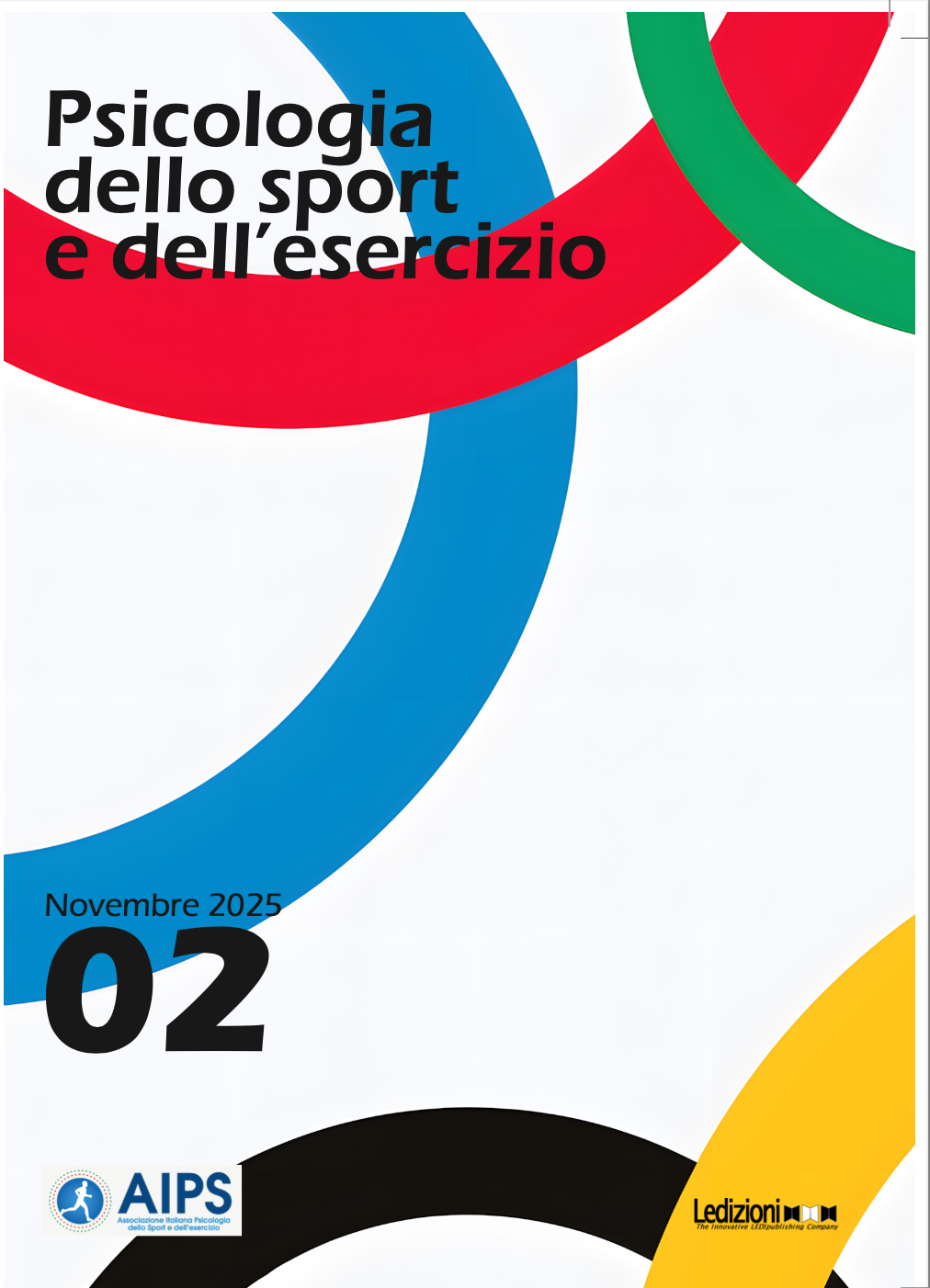From the Mountains to the Olympics: Ski Mountaineering
The Psychological Side of the New Olympic Discipline
Keywords:
ski mountaineering, mental preparation, resilience, risk management, emotional regulation, extreme sportsAbstract
Ski mountaineering is a discipline that combines physical endurance, risk management, and mental adaptation in extreme environments. With its recent inclusion among the Olympic disciplines, this sport is gaining increasing attention not only for its technical challenges but also for the mental training strategies used by athletes to enhance performance and safety. This article explores key psychological techniques, such as mental imagery, positive self-talk, emotional regulation, and fear management, highlighting their role in improving resilience and decision-making under pressure. Additionally, the article discusses the gap in scientific research on mental preparation in ski mountaineers, calling for greater academic interest in this field. Understanding and implementing effective mental training strategies could not only optimize athletes’ performance but also contribute to injury prevention and psychological well-being.
References
Bortolan, L., Savoldelli, A., Pellegrini, B., Modena, R., Sacchi, M., Holmberg, H.-C., & Supej, M. (2021). Ski mountaineering: Perspectives on a novel sport to be introduced at the 2026 Winter Olympic Games. Frontiers in Physiology, 12, 737249. https://doi.org/10.3389/fphys.2021.737249
Brymer, E., & Oades, L. G. (2008). Extreme sports: A positive transformation in courage and humility. Journal of Humanistic Psychology, XX(X), 1-13.
Carnelli, F., Cocuccioni, S., Pedoth, L., Flarer, H., Tedeschi, E., & Viggiano, R. (2021). M_Risk WP3: Empirical research on risk perception and awareness in mountain sports. Eurac Research.
Castanier, C., Le Scanff, C., & Woodman, T. (2010). Mountaineering as affect regulation: The moderating role of self-regulation strategies. Anxiety, Stress and Coping, 24(1), 75-89.
Causarano, P. (2008). Biografie verticali: Studi sulla formazione. Firenze: Firenze University Press.
Etayo-Urtasun, P., León-Guereño, P., Sáez, I., & Castañeda-Babarro, A. (2022). Relationship of training factors and resilience with injuries in ski mountaineers. Sports, 10(191), 1-13. https://doi.org/10.3390/sports10120191
Fransson, L. (2014). Avalanche risk and decision-making among experienced backcountry skiers. Scandinavian Journal of Sport and Exercise Psychology, 3(1), 1-15.
Haegeli, P., Haider, W., Longland, M., & Beardmore, B. (2010). A social psychology perspective on skier decision making and risk taking in avalanche terrain. Risk Analysis, 30(2), 169-191.
Habelt, L., Kemmler, G., Defrancesco, M., et al. (2023). Why do we climb mountains? An exploration of features of behavioural addiction in mountaineering and the association with stress-related psychiatric disorders. European Archives of Psychiatry and Clinical Neuroscience, 273, 639–647.
Hart, M. (2019). Exploring cognitive dissonance on a ski mountaineering traverse: A personal narrative of an expedition to Ishinca (5530 m) in Peru. Sports, 7(249).
Hüfner, K., Burtscher, J., Sperner-Unterweger, B., & Kopp, M. (2023). High-altitude psychosis: A review of clinical cases and neurophysiological mechanisms. European Archives of Psychiatry and Clinical Neuroscience, 273(4), 647-658. https://doi.org/10.1007/s00406-022-01476-8
Imboden, C., Mikutta, C., Schobersberger, W., & Hüfner, K. (2024). Sports psychiatric aspects of mountaineering and alpine sports. Sports Psychiatry, 3(4), 151-152.
Jornet, K. (2017). Summits of my life: Learning to fly. HarperOne.
Lasshofer, M., Seifert, J., Wörndle, A.-M., & Stöggl, T. (2021). Physiological responses and predictors of performance in ski mountaineering races. Journal of Sports Science and Medicine, 20, 250-257.
McCammon, I. (2002). Evidence of heuristic traps in recreational avalanche accidents. Proceedings of the International Snow Science Workshop, 46(2), 145-150.
McCammon, I. (2004). Heuristic traps in recreational avalanche accidents: Evidence and implications. Avalanche Review, 22(5), 1-10.
Melchionda, A., & Rossi, S. (2019). Prevenzione dei sinistri in area valanghiva: Attività sportive, aspetti normativo-regolamentari e gestione del rischio. Università degli Studi di Trento.
Neves, M., Gomes, A. R., & Dosil, J. (2013). Estresse, emoções e confronto no alpinismo: Importância de uma perspetiva transacional. In Atualização em avaliação e tratamento das emoções (pp. 435-456).
Raschner, C., Patterson, C., Platzer, H. P., Lembert, S., & Hildebrandt, C. (2012). The role of core stability in preventing skiing injuries: A longitudinal study in competitive youth skiers. British Journal of Sports Medicine, 46(2), 79-85. https://doi.org/10.1136/bjsm.2010.082487
Roux, L. (2018). Recovering from sports injuries: The case of Laetitia Roux in competitive ski mountaineering. Journal of Sports Rehabilitation, 27(2), 55-68. https://doi.org/10.1123/jsr.2017-0234
Salvotti, E., Mikutta, C., Schoch, E., & Allenbach, E. (2024). PTSD in alpine rescuers: A longitudinal study on psychological effects of mountain accidents. Sports Psychiatry, 4(1), 123-137.
Schorderet, F., Mottet, J., Lathion, A., Raberin, A., Bourdillon, N., & Millet, G. P. (2025). Sex differences in elite ski mountaineering aerobic performance. Frontiers in Sports and Active Living, 7, 1534315.
Spörri, J., Kröll, J., Gilgien, M., & Müller, E. (2017). Overconfidence in ski mountaineering: Risk perception and decision-making among elite athletes. Journal of Sports Science and Medicine, 16(1), 23-30.
Tremper, B. (2018). Staying alive in avalanche terrain. Mountaineers Books.
Tversky, A., & Kahneman, D. (1974). Judgment under uncertainty: Heuristics and biases. Science, 185(4157), 1124-1131.
Downloads
Published
How to Cite
Issue
Section
License
Copyright (c) 2025 Gladys Bounous

This work is licensed under a Creative Commons Attribution 4.0 International License.
Authors retain copyright and grant the journal the right of first publication, with the work simultaneously licensed under a Creative Commons Attribution 4.0 International License (CC BY 4.0), which permits use, sharing, adaptation, distribution and reproduction in any medium or format, provided that appropriate credit is given and the original publication in this journal is acknowledged. Authors may enter into additional non-exclusive arrangements for the distribution of the published version (e.g., deposit in institutional repositories or inclusion in books), provided the initial publication in this journal is acknowledged.



